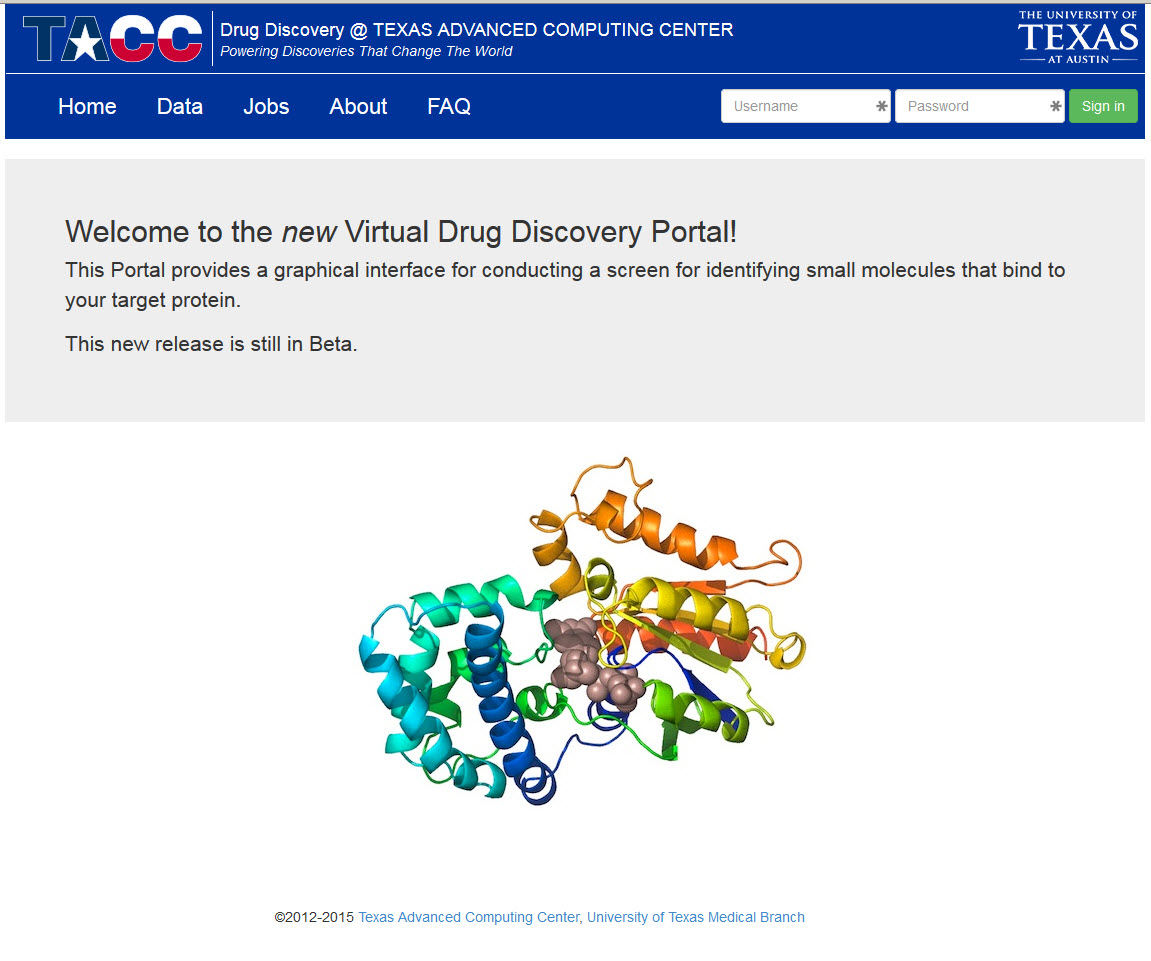
A laptop and Internet access are all researchers need to be on a path to discovering possible new drug candidates to fight a vast number of diseases, including obesity, cancer, influenza, dengue fever and leishmaniasis, a tropical disease transmitted by sand flies.
Stan Watowich, PhD, associate professor in UTMB’s Department of Biochemistry and Molecular Biology, has been collaborating with the Texas Advanced Computing Center at the University of Texas at Austin since 2013 to develop the DrugDiscovery@TACC portal.
More than 120 researchers worldwide are now using the portal, which is powered by a TACC petascale supercomputer containing 30,048 next-generation processors. It can quickly identify small molecules that bind to a target protein—the first step in drug discovery.
“All you have to do is upload a protein of interest that is involved in a disease. The web portal submits it to the supercomputer, which tests hundreds of thousands of molecules to see if they might bind to the protein—it’s like solving a massive 3-Djigsaw puzzle,” said Watowich.
Without supercomputer resources, it used to take years to do the same calculations in the lab. “We have it down now so we can do this searching in the course of a day—and we hope to get even faster,” he said.
 Stan Watowich teaches a workshop in Colombia.
Stan Watowich teaches a workshop in Colombia.Watowich recently returned from a trip to Colombia, where he taught researchers from several Latin American countries how to use the free, user-friendly portal. He said it’s already proving beneficial to researchers in developing countries that do not have access to high-performance computing or an extensive background in computational chemistry.
“Everyone was submitting their disease-specific proteins to the supercomputer in Austin and getting their results back in a day,” said Watowich. “We had doctors, faculty and students from seven different countries, including a few from Cuba, and they were all excited. It was really rewarding to see people moving their projects forward and see the science community come together.”
The portal is also helping researchers in Texas and the rest of the U.S. get drug discovery calculations done much quicker. Watowich and his lab at UTMB recently used the portal to find compounds that target a newly identified enzyme involved in obesity.
-with-the-doctors-faculty-and-students-from-seven-different-countries-who-attended-a-recent-workshop.jpg?sfvrsn=3be0d858_0&MaxWidth=400&MaxHeight=&ScaleUp=false&Quality=High&Method=ResizeFitToAreaArguments&Signature=7897423C53A1739C1ED474DB818F1675352500C9) Watowich (center) with the doctors, faculty and students from seven different countries who attended a recent workshop.
Watowich (center) with the doctors, faculty and students from seven different countries who attended a recent workshop.
“The idea is if you can inhibit this particular enzyme, you increase metabolism and those fat cells start burning many more calories, resulting in weight loss,”said Watowich. “We quickly ran the program, got some predictions, and some of the drug leads are now working in the laboratory. We’re now moving forward into animal studies and are in discussion with some pharmaceutical companies that have expressed interested.”
Watowich admits that the drug development process is a long and winding road. Discovering and bringing one new drug to the public is expensive and can take up to 20 years before it’s available in pharmacies. But, he says the DrugDiscovery portal can help researchers take that first step to finding a medication that could ultimately cure disease.
“We are trying to help researchers rapidly combine new ideas and disease targets with advanced computing resources, to produce novel drug candidates.This resource can set researchers on a productive path forward that they may never have found otherwise.”
So far, researchers have used the portal to complete more than seven million hours of calculations, resulting in dozens of potential new drugs.The portal is available to any and all interested researchers. It can be accessed at
drugdiscovery.tacc.utexas.edu.